Once the headquarters of one of the most influential ethnic fraternal organizations in the country and now home to one of Chicago’s most famous architecture firms in Studio Gang, the old Polish National Alliance HQ is a dignified bit of Depression Deco designed by Joseph Slupkowski and completed in 1938. But did you know that it could’ve been an eight-story tower designed by Raymond Hood, architect of Tribune Tower?
(i didn’t)

The Polish National Alliance was (and is) one of the largest ethnic fraternal organizations in the US. In the 20th century, the PNA’s mission was two-pronged: one, to provide a foundation for Polish people to flourish in the United States–through the provision of low-cost insurance to members, providing English lessons, and organizing Polish schools—and two, to fight for a free and independent Poland in Europe.
Energized by the re-establishment of Poland as an independent country in 1918 and growing rapidly as Polish immigrants flocked to the US, the PNA needed a new national headquarters. Plus, their frenemies down the street, the Polish Roman Catholic Union of America, had built themselves a grand new home at Augusta & Milwaukee in 1913.
The PNA bought this plot on Division Street in Chicago’s Polish Downtown in 1922 and launched a design competition two years later. 24 firms entered—Raymond Hood, fresh off his win in the Tribune Tower competition, was the only East Coast architect to enter. The jury—composed of influential Chicago architects Hugh M.G. Garden, John Wellborn Root, and Benjamin Marshall, as well as two PNA officials—chose Hood’s proposal, a temple-like eight-story box (honestly, I think it would’ve been ugly as hell, what we got is better).
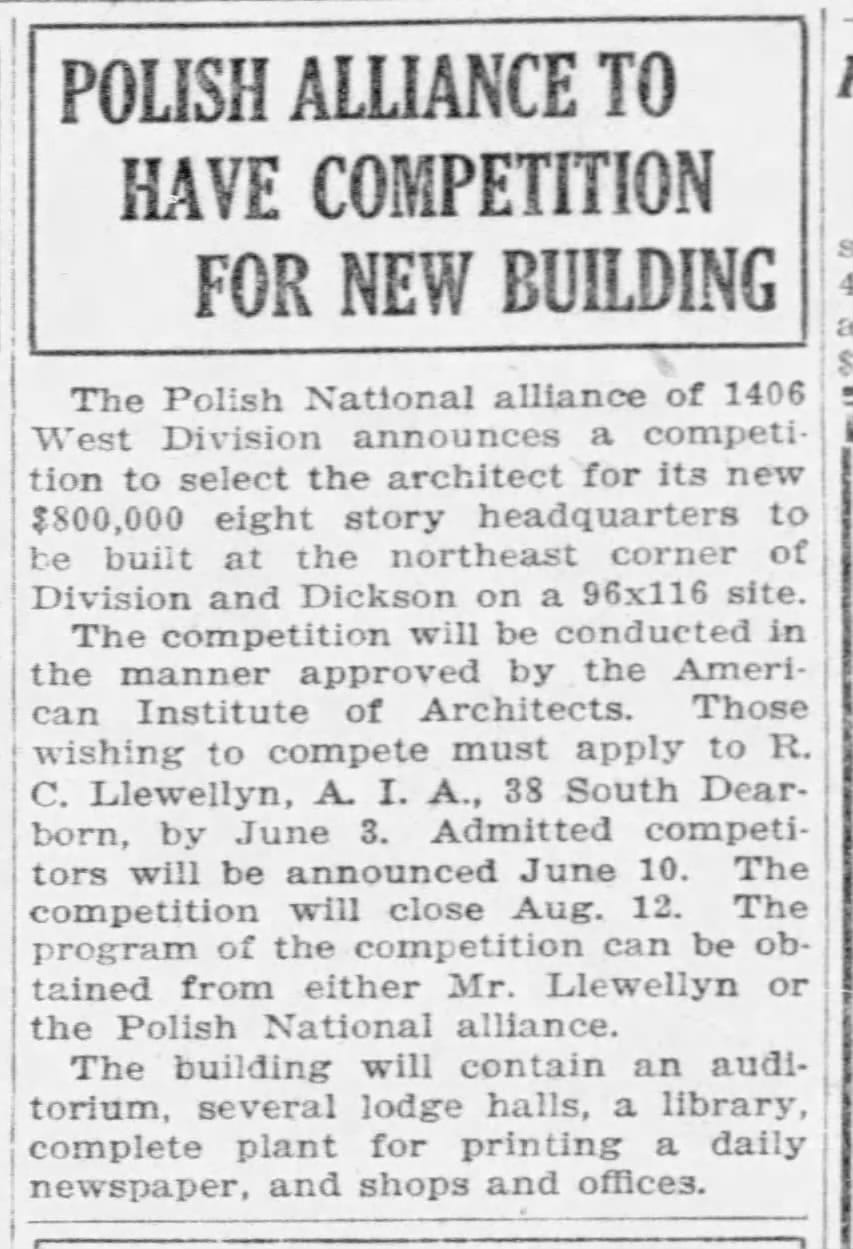


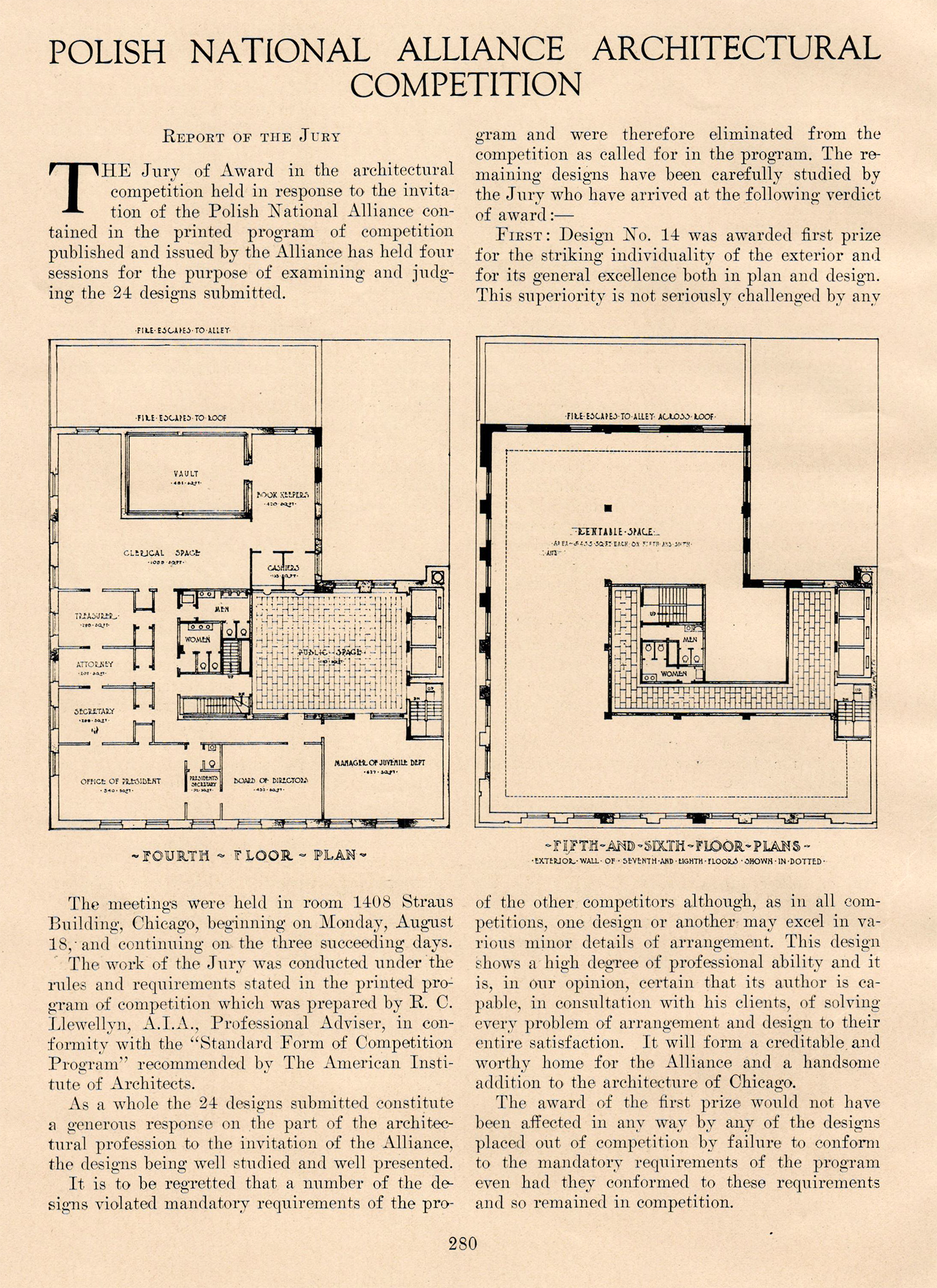
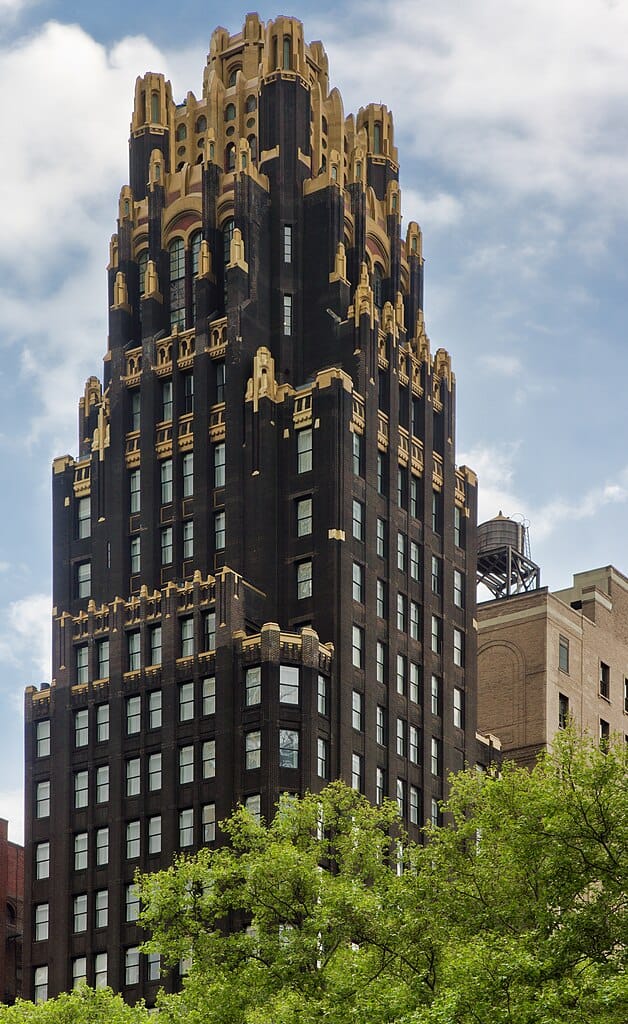
1924 articles about the Polish National Alliance design competition | Image of Hood's winning entry, Pencil Points, 1928, USModernist | Report of the competition jury, the American Architect, 1924, USModernist | American Radiator Building in New York, 2012, Jean-Christophe BENOIST, Wikimedia Commons
It didn’t get built. Apparently, building for the PNA—with all sorts of internal turf battles and complex fundraising dynamics—was harder than constructing Hood’s iconic American Radiator Building in Manhattan, designed at roughly the same time.
It worked out in the end—when the PNA tried again in the late 1930s, they hired a local architect, Joseph Slupkowski, which seems more appropriate anyway. Slupkowski was a PNA member, did a lot of work for the local Polish community, and even went to school across the street at Holy Trinity. It’s interesting to compare Slupkowski’s downsized, stripped-down Art Deco with the original plans and the PRCUA HQ nearby.
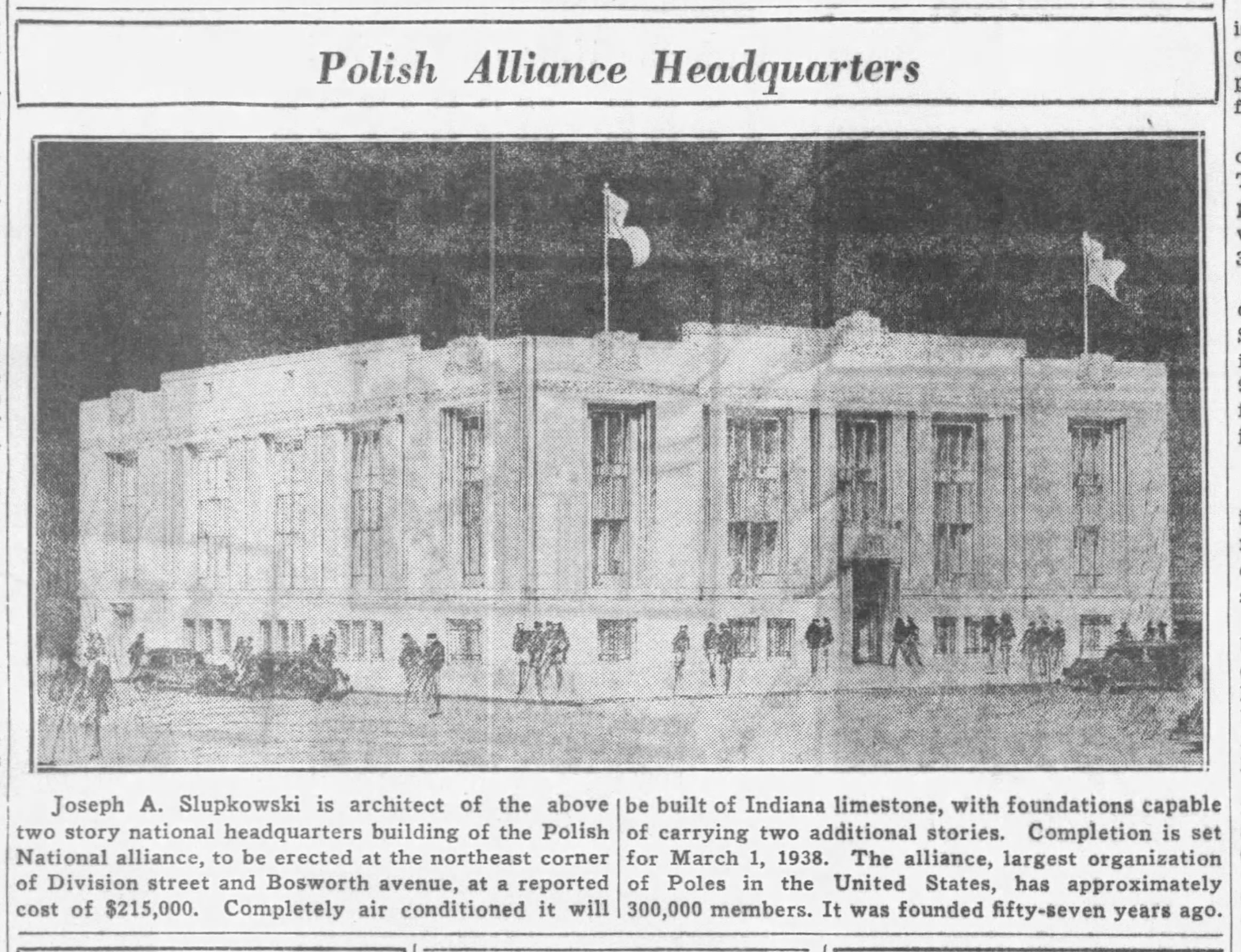
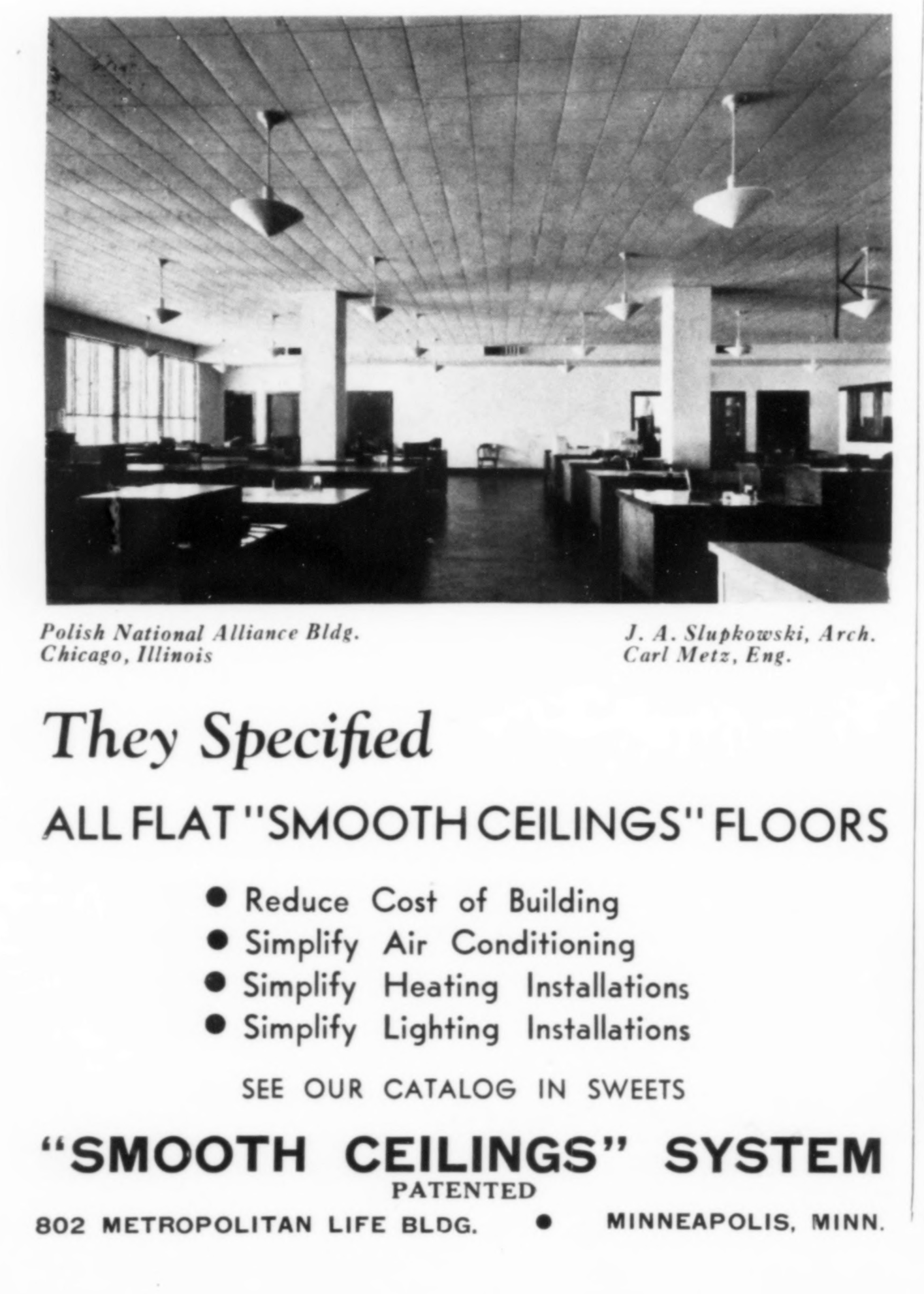
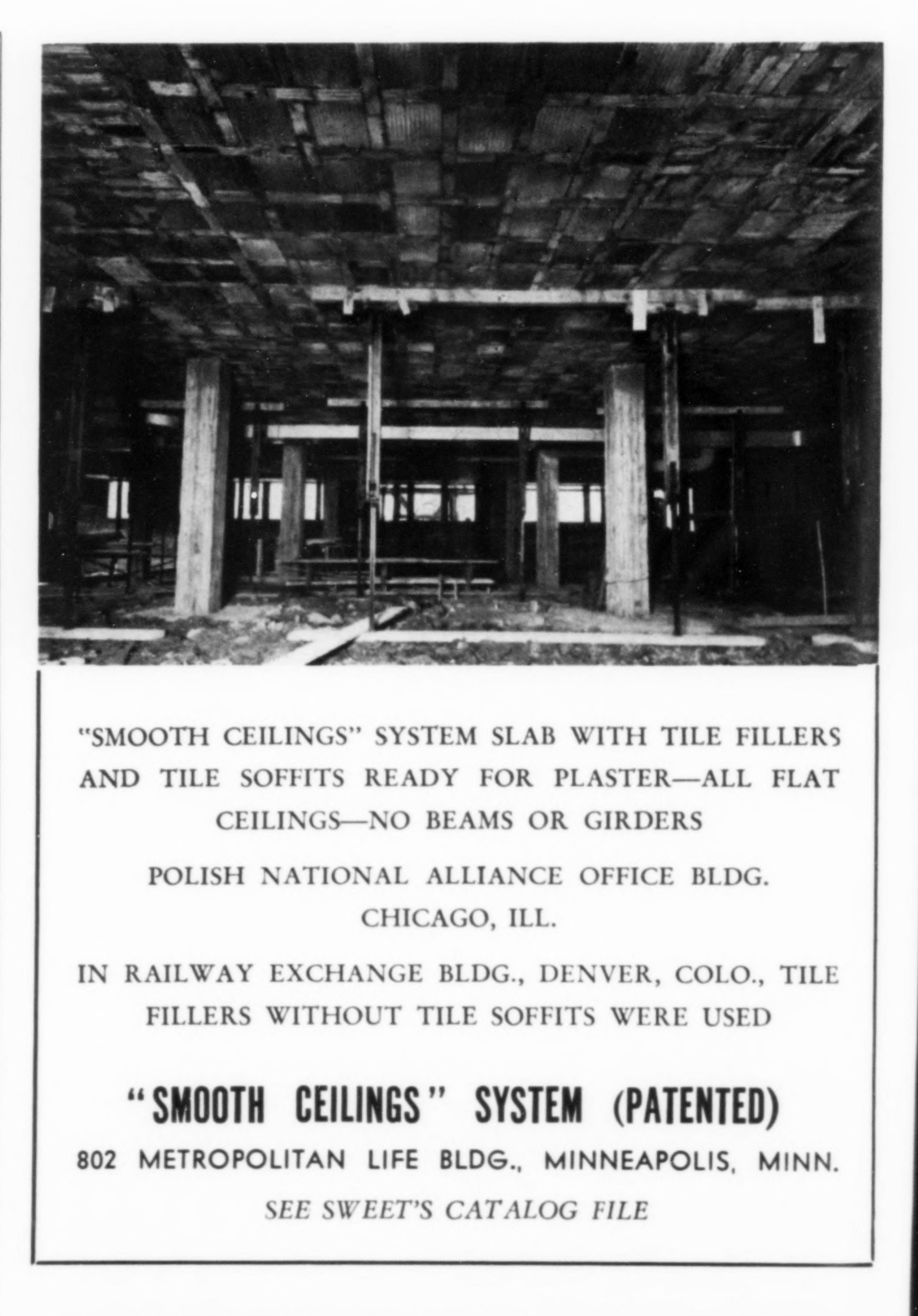
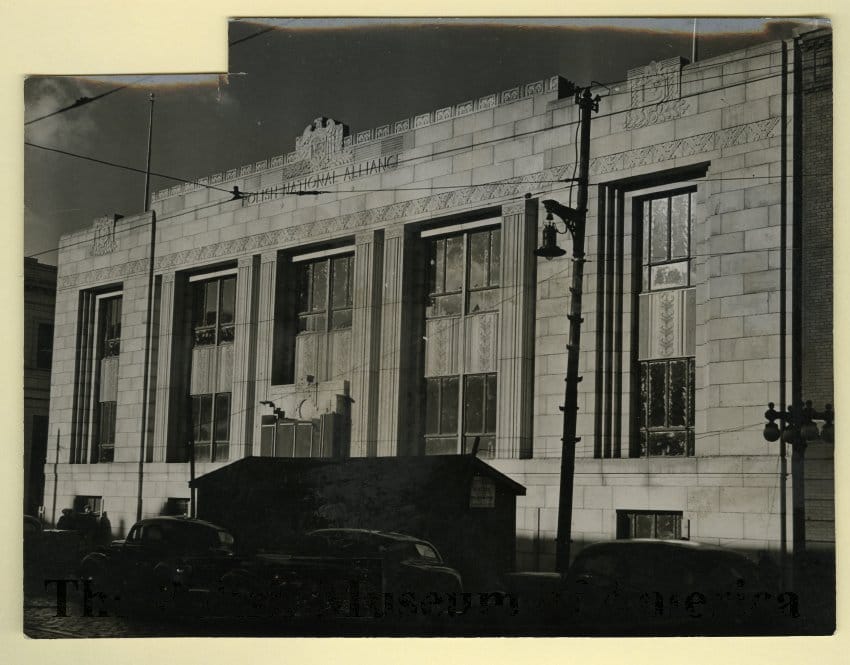

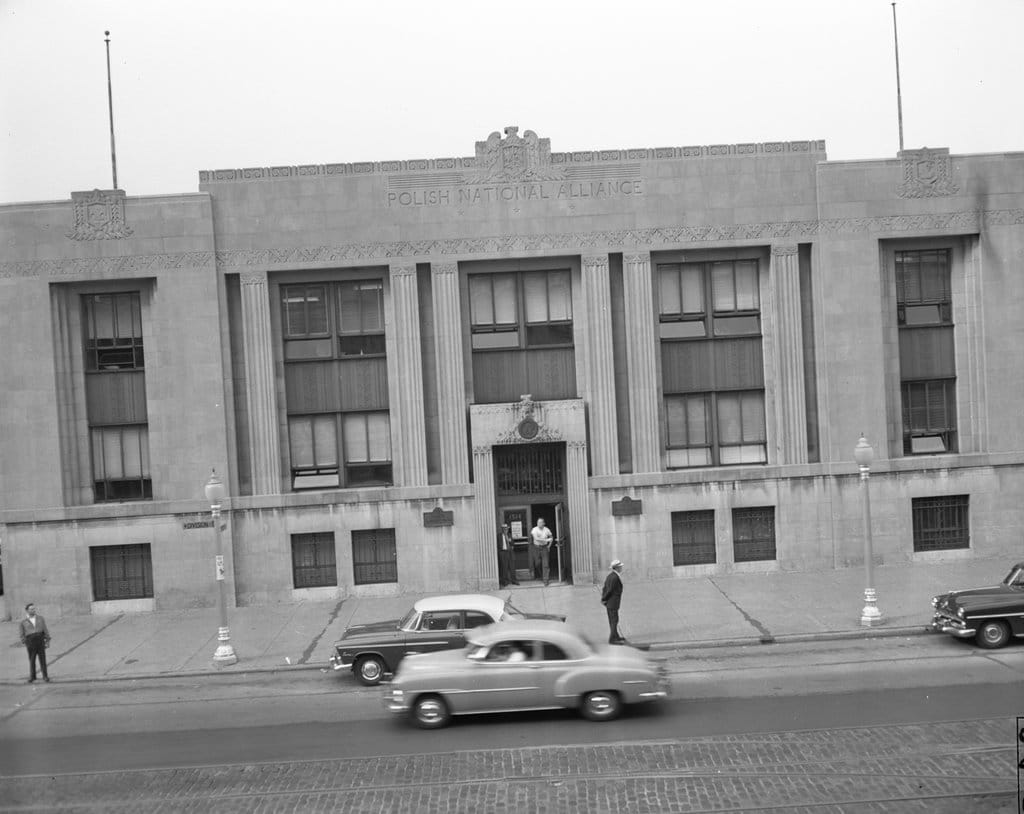
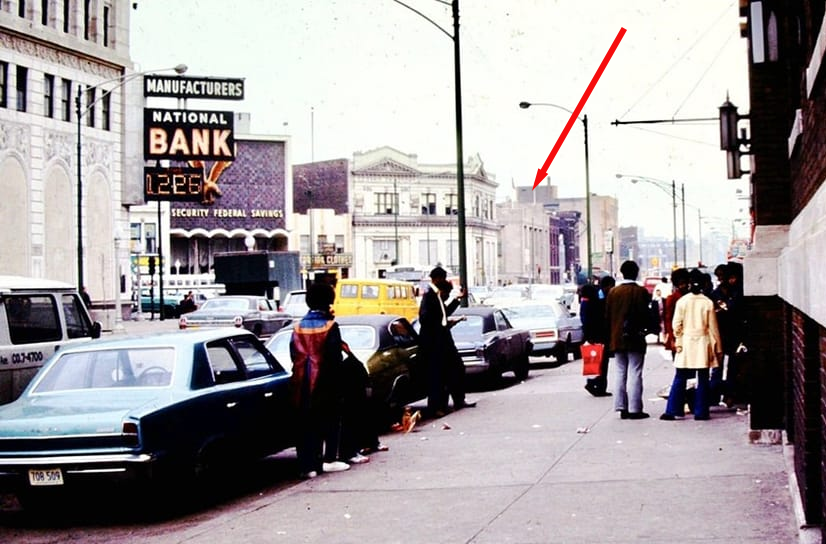
1937 article about the new PNA HQ | 1937 and 1938 ads for a ceiling company used in the building, Architectural Record | 1938, Polish Museum of America | Undated | 1955, Chicago History Museum | 1972, Lorenzo Clemons
Here, the PNA dispensed with a clubhouse, a banquet hall or anything super celebratory. Instead the building housed offices, a library, a small museum, etc. A serious building for a serious time for a serious organization—by the 1930s, the Polish National Alliance was a major fraternal benefit organization with more than 270,000 members, dispensing millions in burial insurance benefits and lobbying Congress.
The PNA sold the building in 1976 and moved north to a new headquarters in Sauganash. After the Poles sold it, 1520 W. Division housed a social security office, then the College of Office Technology, a private technical school that closed in 2013.
Designated a Chicago Landmark in 2014 and added to the National Register of Historic Places, that year architecture firm Studio Gang bought the building for $2.5m. Studio Gang restored and renovated the building into an office befitting an world-renowned firm. Eating their own cooking, the firm added a neat indoor/outdoor event space and green roof prairie on the rooftop, which they consider a "living laboratory" for testing the biodiversity impacts of green roofs.
Production Files
Further reading:
- City of Chicago Landmark Designation Report
- National Register of Historic Places Nomination Form
- Polish National Alliance Architectural Competition: Report of the Jury
- Chicago's Polish Downtown by Victoria Granacki
- PNA: a centennial history of the Polish National Alliance of the United States of North America by Donald E. Pienkos


Józef A. Słupkowski designed a ton of buildings for Chicago's Polish community, including at least two for his alma mater, Holy Trinity. I thought this Polish-language ad from Dziennik Chicagoski in 1921 was particularly neat–it's him announcing he's organizing his own firm.
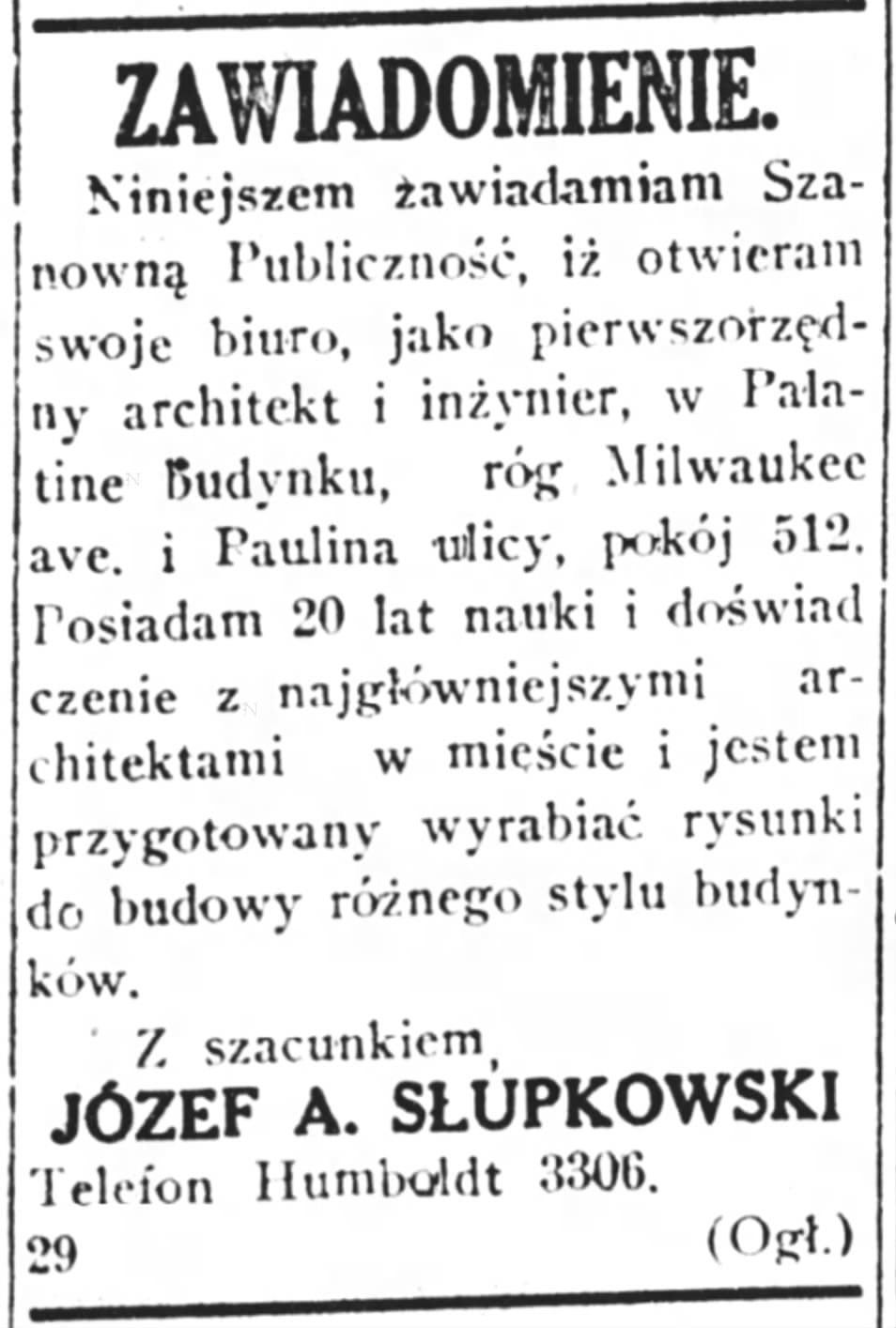
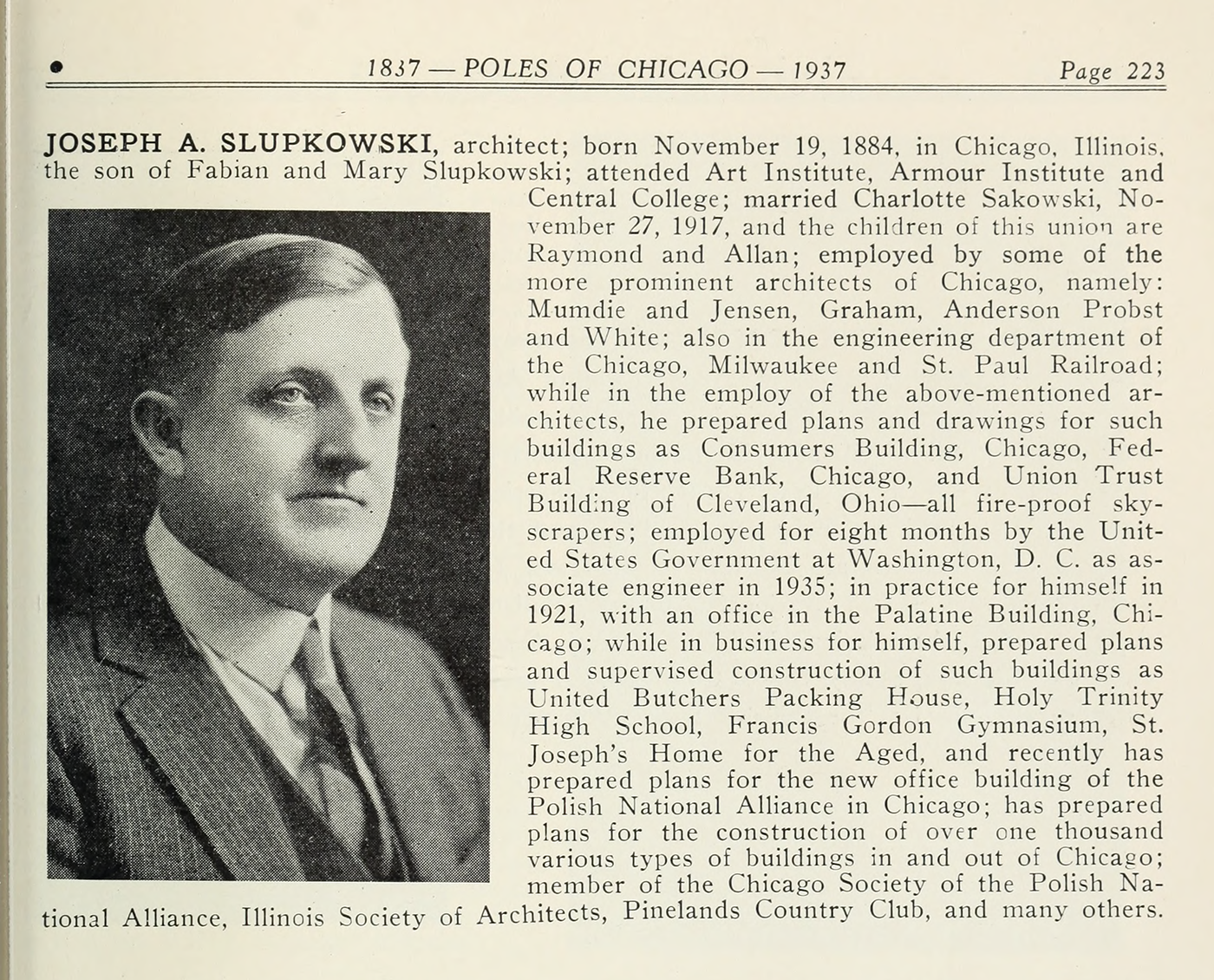
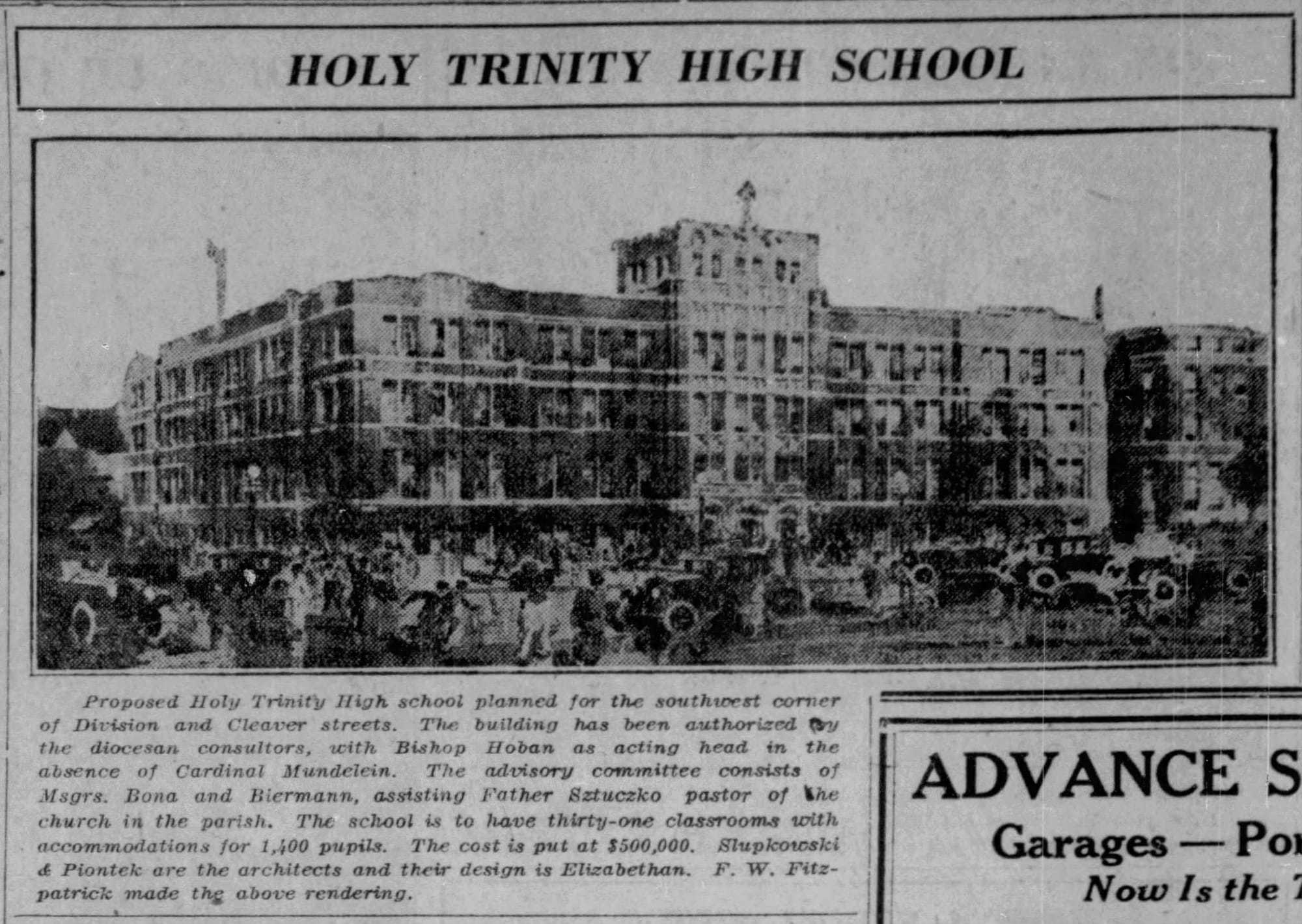
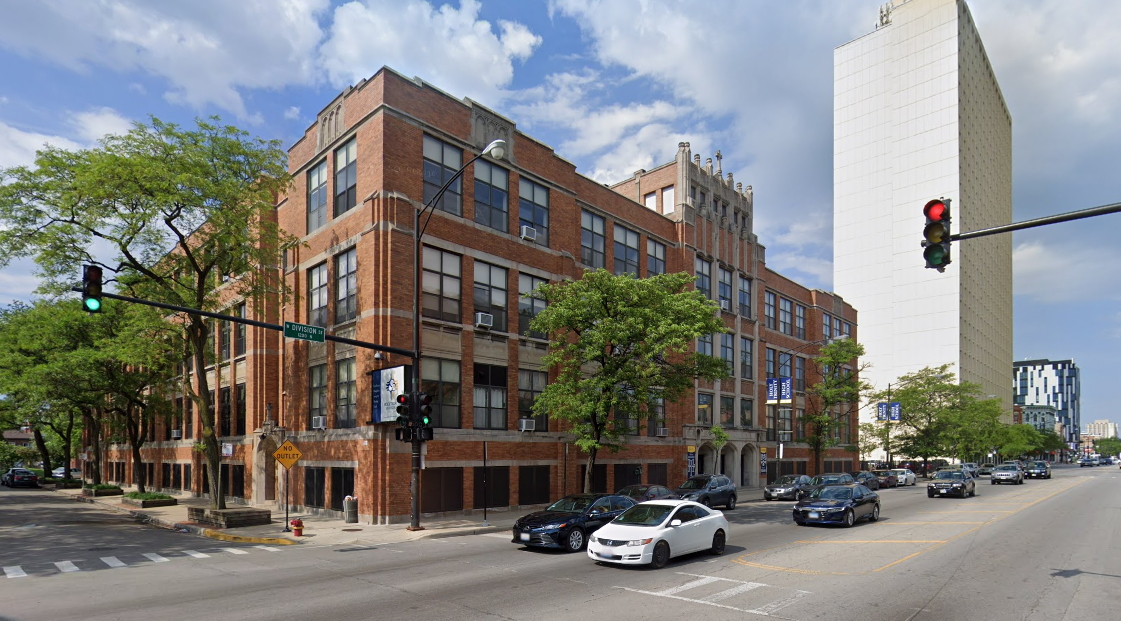
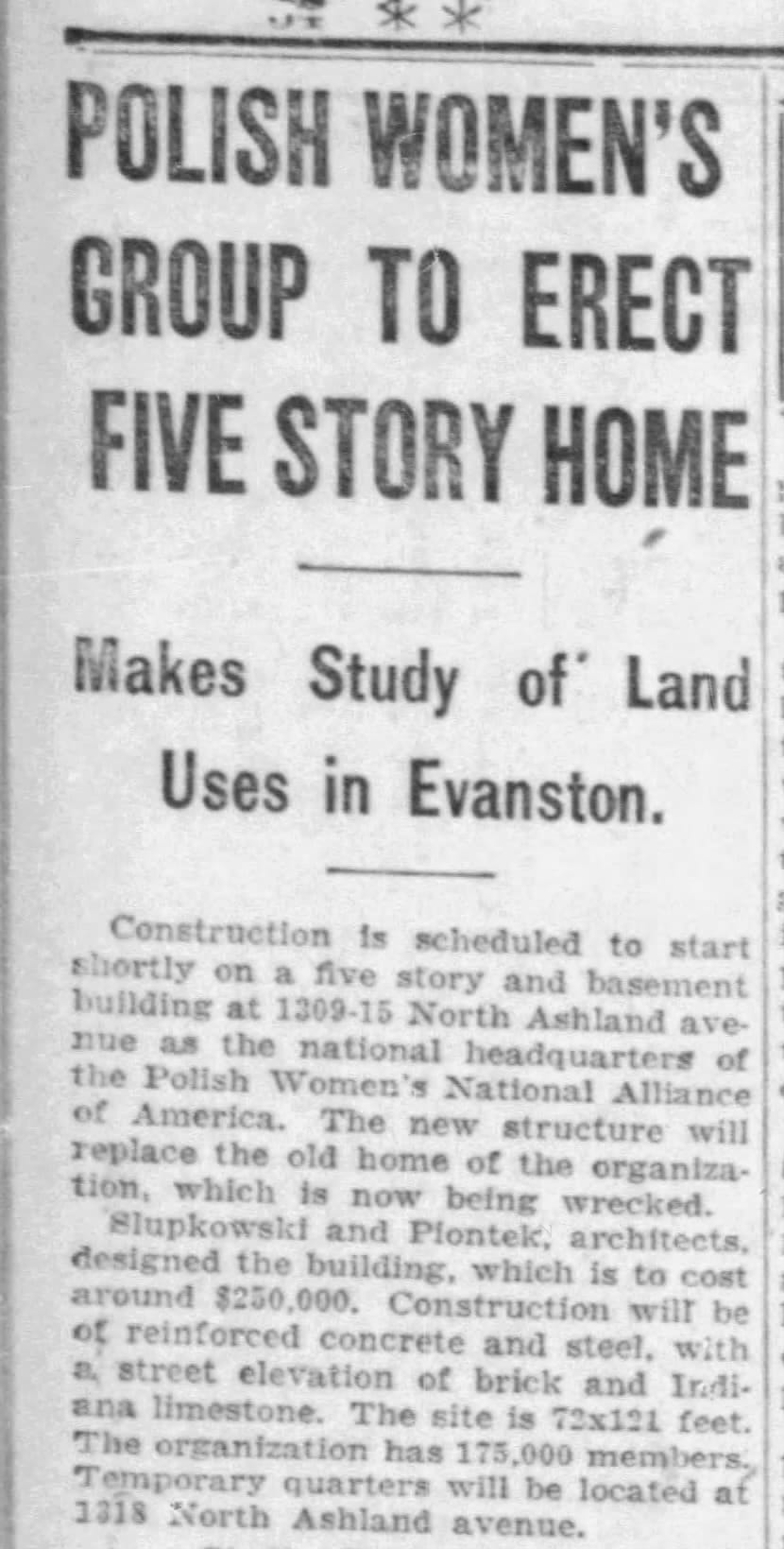
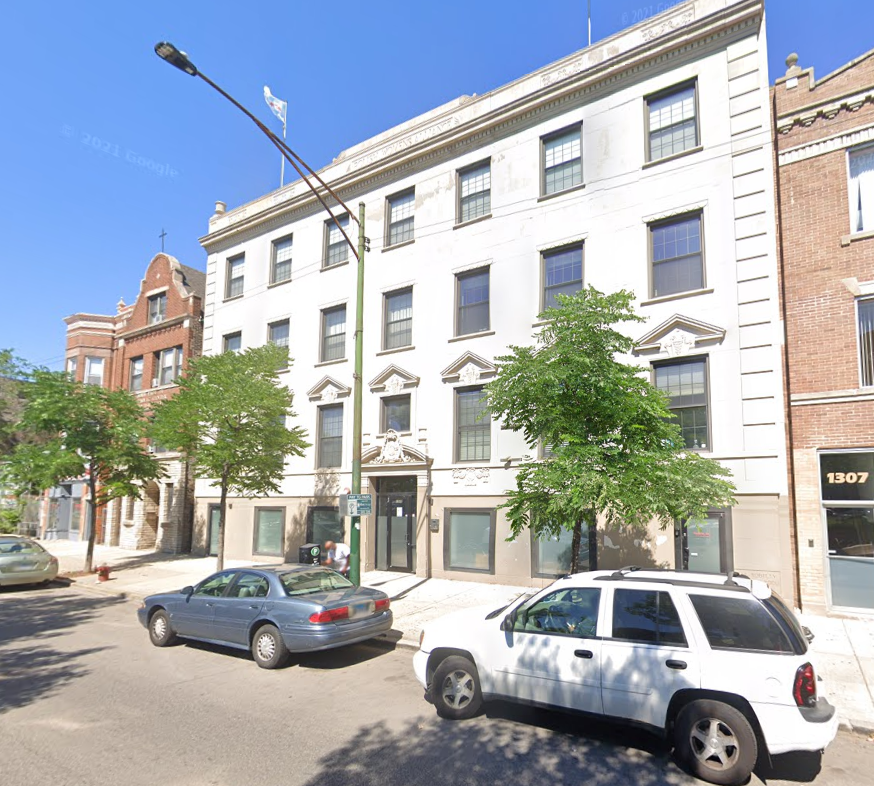
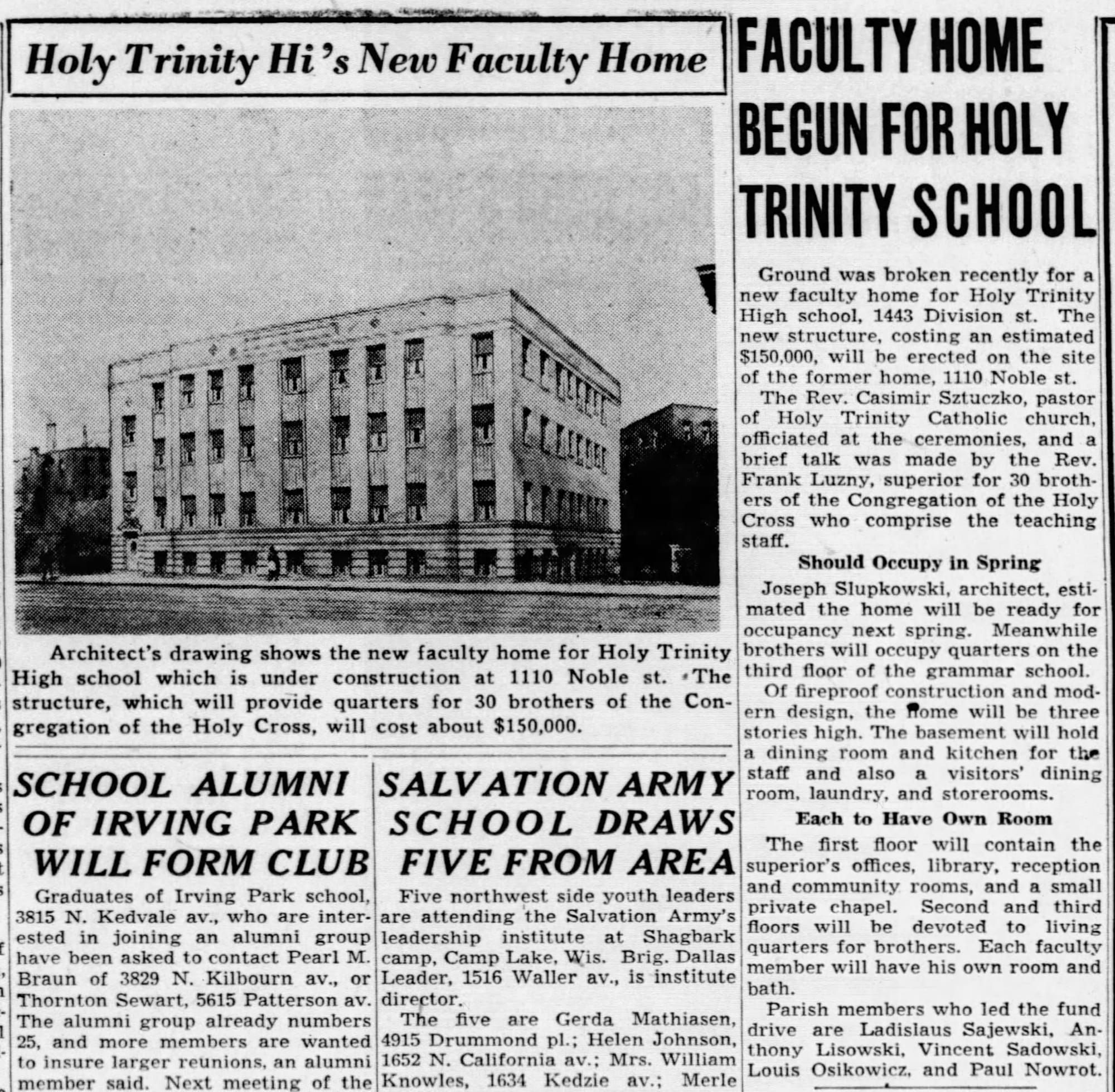
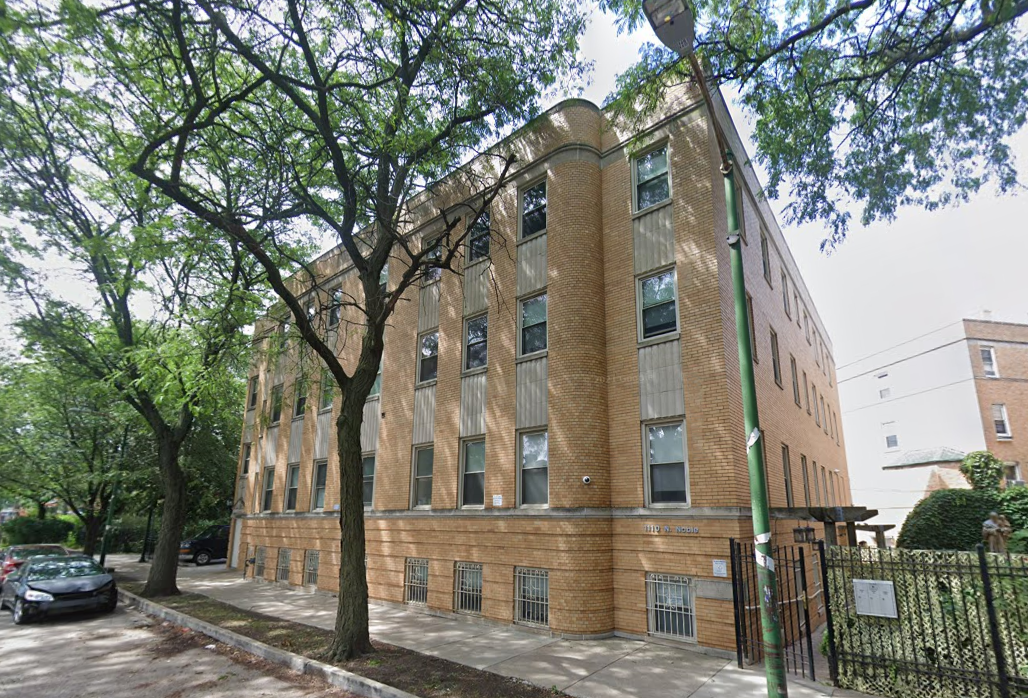
1921 ad in Dziennik Chicagoski | Slupkowski profiled in Poles of Chicago, 1837-1937, the Internet Archive | 1927 article on Slupkowski & Piontek's Holy Trinity High School Building and the high school on Google Streetview | 1931 article about on Slupkowski's Polish Women's National Alliance building and the building on Google Streetview | 1947 article on Slupkowski's faculty home for Holy Trinity and the building on Google Streetview
He also had a funny appearance in this 1938 article about an attempt to rename a small street in Avondale–Haussen Court, which Slupkowski happened to live on–to Crawford, which the Chicago Polonia hoped would make it impossible to reverse the change of Crawford Avenue to Pulaski (i.e. "well, we can't change it back now, there's already a Crawford Avenue). Clever.

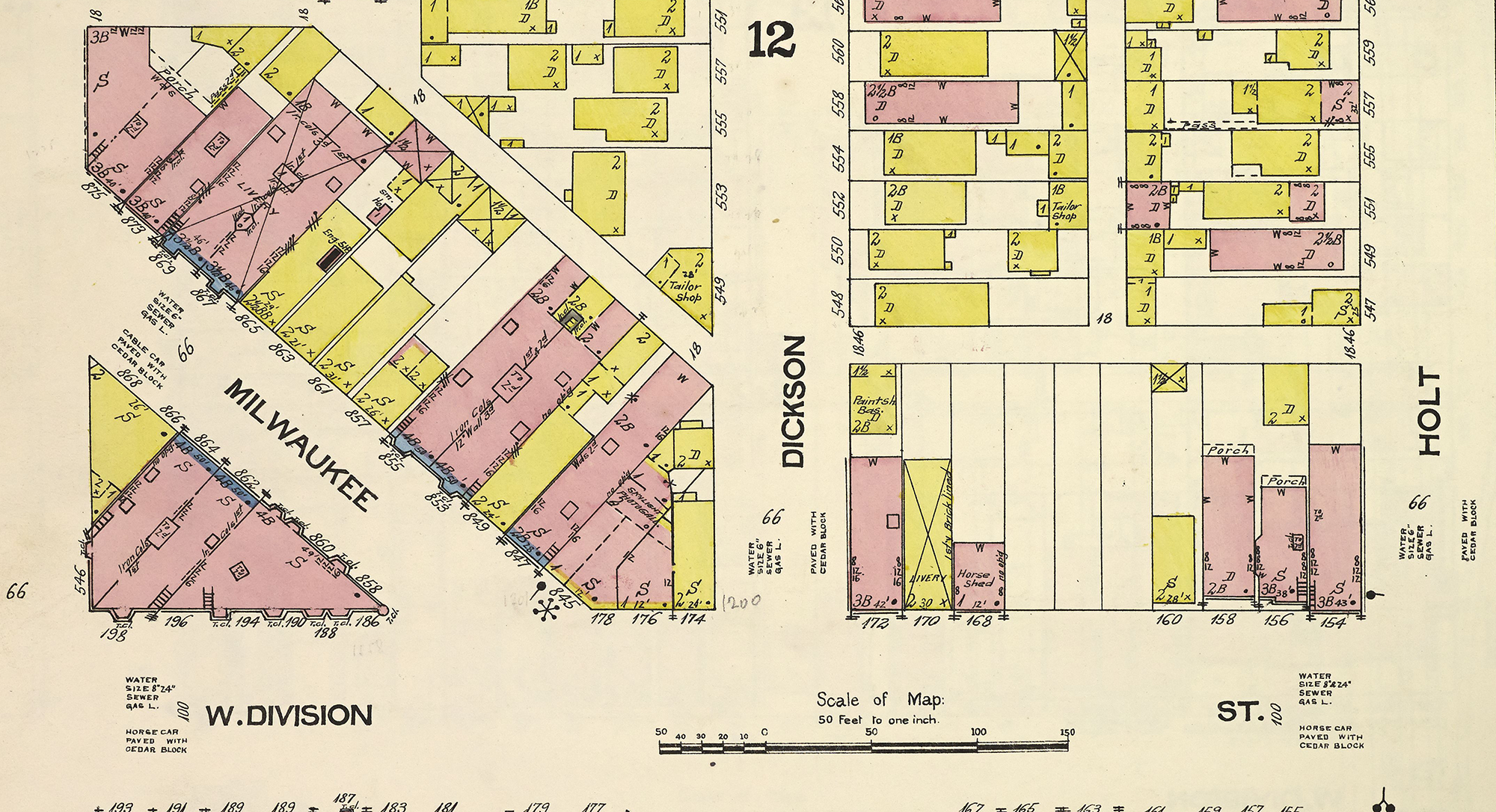
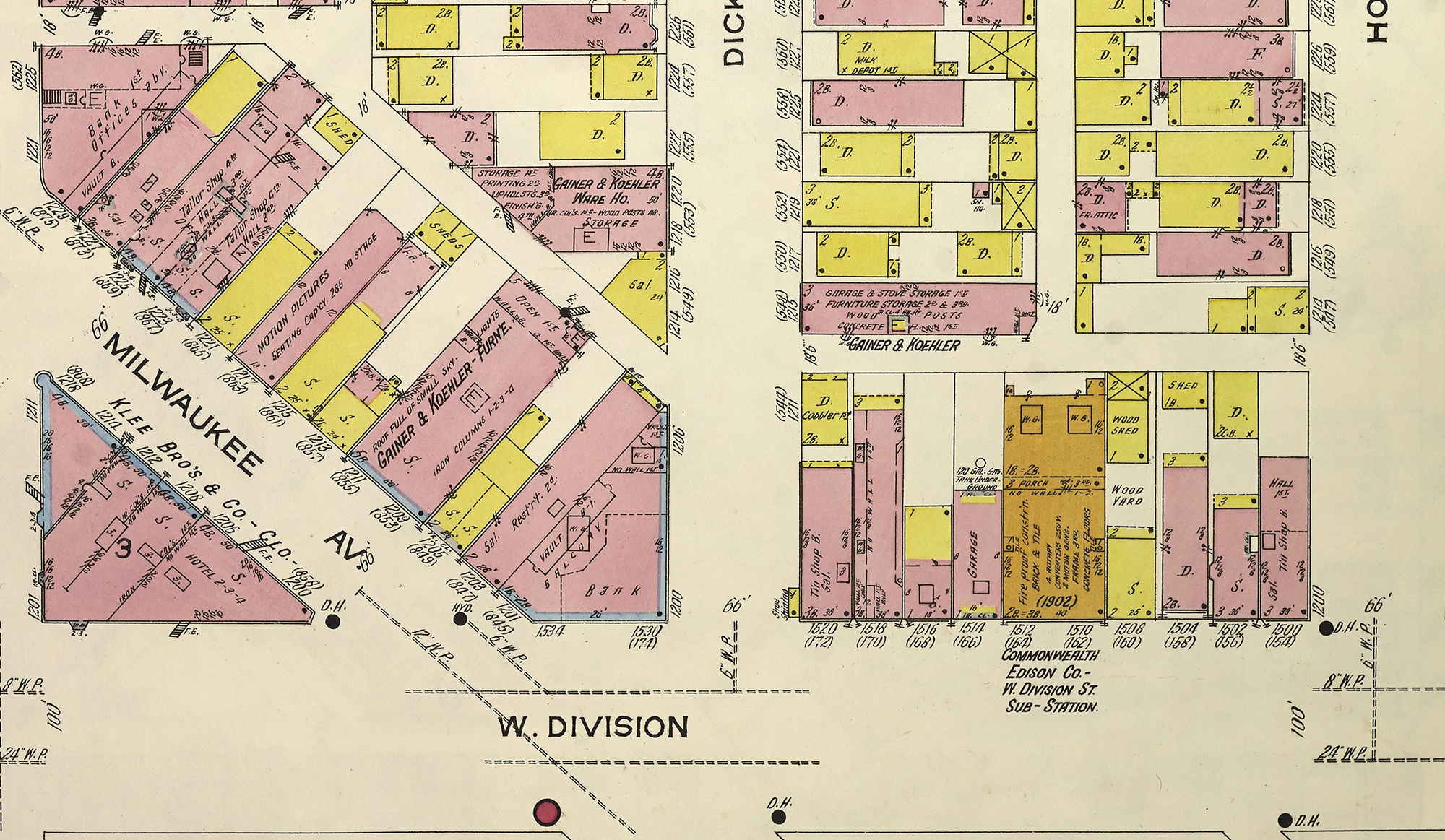
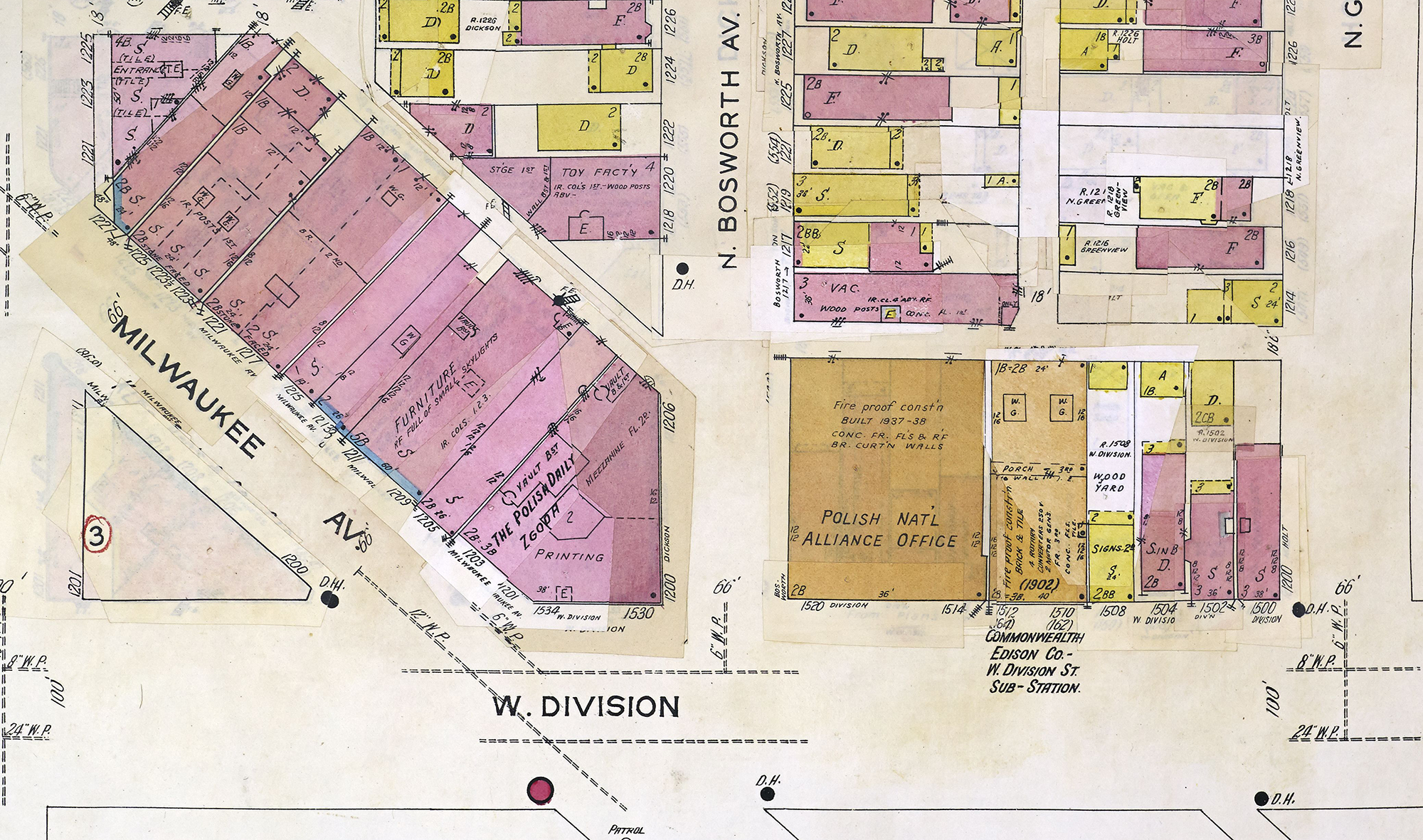
1892 Fire Insurance Map | 1914 Fire Insurance Map | 1950 Fire Insurance Map




Member discussion: